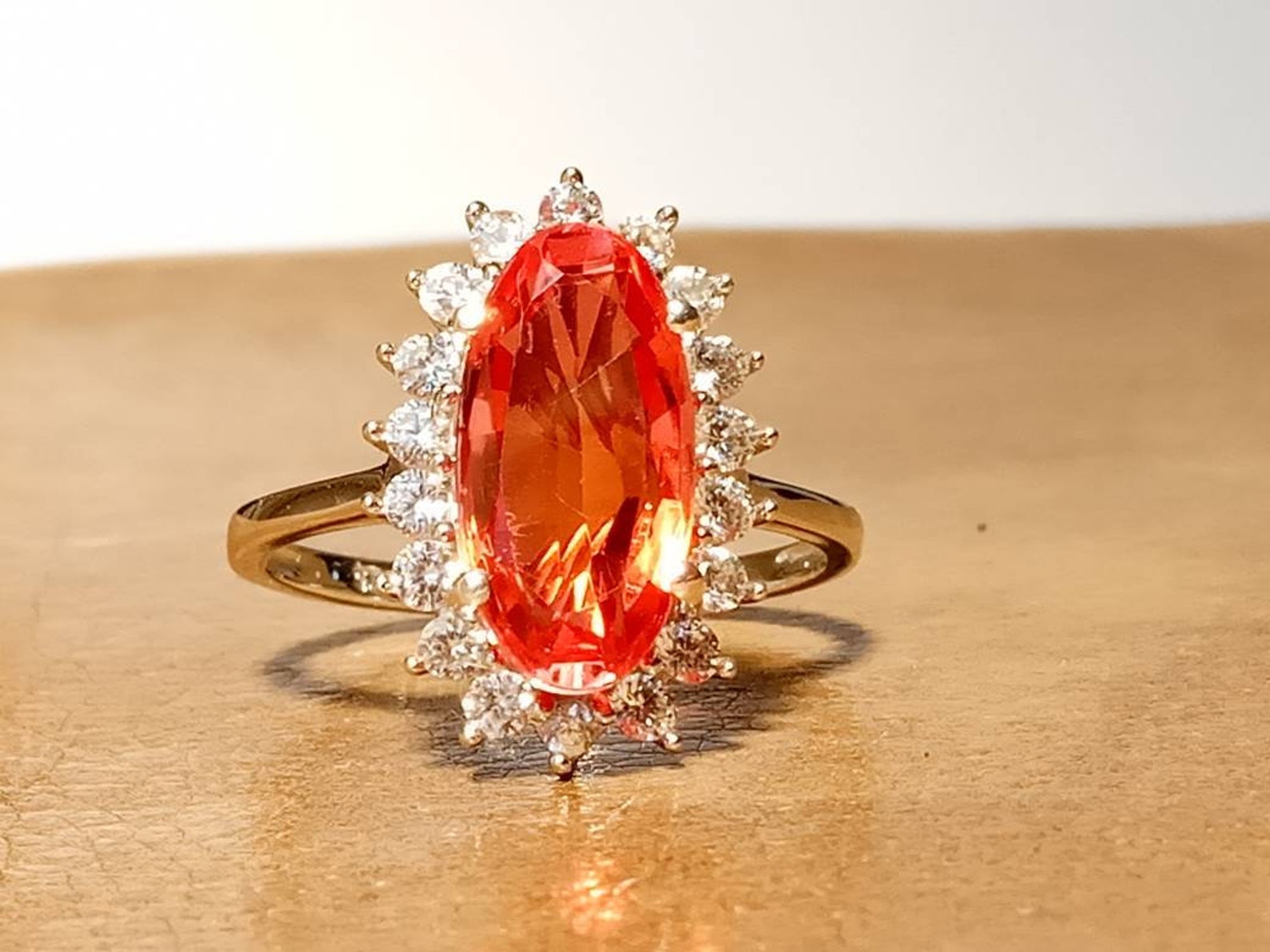

How to judge a Padparadscha’s colour is still up for debate. African Padparadscha tends to be darker in tone and lean more towards the orange tone, which contradicts the definition of its name. Supplies from other producing countries like Madagascar, Tanzania, and Vietnam however, are not quite able to match the finer quality compared to Sri Lankas in terms of colour and clarity.

Many sapphires above 100 cts were found there, notably the largest star sapphire in the world The Star of Adam Padparadscha is still being found in Sri Lanka, the supply is very limited. Sri Lanka is a country abundant with gemstones, sapphires in particular. Lotus Flower under Sunset Sunlight The Origins of Padparadscha For Sri Lankans, Padparadscha must have a dominant pink tone to its subtle orange mix. To best describe Padparadscha’s orangy-pink tone, a lotus flower has to be struck by a sunset orange light to obtain that bi-coloured body tone. Rich in pink, at first glance the flower may not resemble the colour of Padparadscha. Its name was originated from Sri Lanka where it is first discovered, translated from Sinhalese which is a native Sri Lankan language, with the meaning of “lotus flower”. It has a dominant pink body tone which is what its name referred to. Padparadscha appeared to be an orangy-pink variety of sapphire. The colour of Padparadscha however, is coloured by iron and chromium which is an extremely rare colour combination by nature, resulting in one of the most appealing tones to be seen yet. Trace elements of iron and titanium are responsible for blue, the more the iron, the bluer it get. Generally, sapphires are blue with a chemical composition of aluminium and oxide.


 0 kommentar(er)
0 kommentar(er)
